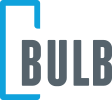Using IoT Insights to Improve Customer Experience
Connected devices are on the rise.
Wherever you go these days, there are smart devices to simplify your life. Whether it’s a smart speaker that tells you what the weather might look like for the day or an intelligent coffee machine that begins brewing when your alarm goes off- the opportunities are endless.
By 2025, IDC predicts there will be around 55.7 billion connected devices worldwide. That’s around five times the global population of the planet.
For businesses, the rise of IoT could have more benefits than you might think.
Using connected devices in your company could help you to glean better insights into your customers, their preferences, and even the operations of your organization.
Here’s what you need to know about using IoT to enhance customer experience.

IoT and the Benefits of Real-Time Data
Today’s companies are already using IoT and intelligent technology in a range of impressive ways. You can implement IoT elements into your device management strategy, and use them to track inventory levels, so you never run out of stock. IoT can help with asset utilization, improve security, and enhance agent productivity on a massive scale.
For user experience purposes, IoT also represents a valuable source of real-time data. Through sensors and connected products, companies can collect valuable insights about their audience at the moment. For instance, you could place sensors in a retail store to explore how customers move around shelves, so you know where to place your items for the best chances of sales.
Companies shipping products to clients can use sensors to detect where an item is in transit, providing clients with updated insights into their delivery times. This way clients can always know exactly where their packages are. That means less waiting around for something to be delivered.
Let’s look at some of the current biggest benefits of IoT for customer experience in depth.
1. Paving the Way for New Levels of Automation
IoT and connected devices are a crucial component in the concept of “hyper automation”. Hyper automation refers to the idea that numerous parts of the workplace can be automated to improve productivity, outcomes, and efficiency. With connected devices, companies can set up endless triggers for automation, which minimize the path to market for products, and boost customer experiences.
For instance, you could set up cross-functional processes where a machine immediately sends an alert to an engineer when a device on your manufacturing floor begins to malfunction. If you’re a service provider, you could set up IoT automation strategies with your data centres, which automatically change the way data is routed if one data centre has a bandwidth issue.
In today’s world, this is a crucial capability. Connectivity has become a necessity as well as a preference. With a COVID pandemic, clients took their offices home with them. Service providers had to deal with new levels of demand, and this continues today. Modern service providers must ensure that both the client’s personal, and business life can be enhanced with the right routing capabilities.
All the while, these connected devices will also be delivering meaningful feedback, insights, and reports that you can use to make more informed decisions about the future of your company. IoT solutions combined with AI tools can deliver useful reports on everything from performance bottlenecks, to impending maintenance issues.
2. Improve Employee Focus
Automation and IoT make the business more efficient, therefore increasing the speed with which the customer gets the products and services they need. However, the right strategies can also improve the person-to-person experiences in the modern environment too. Today’s customer service, sales, and success teams are often overwhelmed with a huge amount of work to do each day. Unfortunately, much of their time is taken up by repetitive administrative tasks.
Using IoT solutions and automation tools in tandem, companies can ensure that modern employees have the time and focus required to deliver the best human experiences to clients. With your automated systems handling the repetitive tasks, human employees are free to do what they do best – generate delighted, loyal customers.
IoT solutions like kiosks connected to the cloud can also offer self-service opportunities for customers, allowing them to troubleshoot issues, make orders, and address their concerns much faster than they would with a standard website. Just imagine, you can fix your bandwidth issues from your couch during TV commercials and not miss any part of your favourite TV show. All you need is a high-tech solution on your phone connected to your home devices.
3. Predict Potential Trends and Opportunities
IoT sensors and technology collect huge amounts of information every day. This information can help to keep the company running smoothly, potentially when it’s aligned with AI systems and RPA solutions. However, the right data could also potentially foretell problems and opportunities too. For instance, IoT sensors in a data centre could give engineers advice on when a telco service is beginning to show signs of latency.
Solutions like these consequently lead to proactive issue solving way before clients even notice problems arising. Who doesn’t want to have a service provider that solves issues faster than they can call customer service?
The same tools can inform business leaders when stock levels are running low and keep records of times when demand might increase. This allows AI solutions to predict when future peeks in demand might occur, so companies can increase their investment and reduce the risk of stock-outs. IoT tools can tell companies when a delivery is going to be late, by tracking supplier pipelines, so that brands can inform customers ahead of time.
The right IoT solutions may even be able to track things like customer usage of certain products and services, offering insights into impending trends that business leaders need to be aware of, so they can optimize network performance in the right areas.

4. New Opportunities from Insights
The data you accumulate as you embed more connected devices into your business can unlock new insights into opportunities that you may have missed until now.
For instance, you might notice that you’re getting a higher amount of traffic in certain stores, so you know to increase stock or staffing levels. IoT solutions can also show you where you’re most likely to have issues with your performance, supply chain, and manufacturing processes, so you know when you need to make meaningful changes.
IoT technology placed insight of various consumer tools can deliver new sales opportunities for teams, by allowing companies to detect when a printer is running out of ink, or when a contact centre system is approaching its limits regarding bandwidth. This means that you can always be ready to upgrade your offering and deliver what the customer needs.
5. Personalizing Customer Experiences
IoT devices have the potential to deliver new levels of personalization into the customer experience. Brands can use information gathered on both a macro and micro level to understand the customers they’re trying to serve and build better solutions for their needs.
For instance, if your IoT systems show you that customers in certain regions are beginning to use more data at specific times of the year, you could create special deals and offers to help those customers deal with the influx of demand.
If you recognize that certain customers are more likely to be subject to specific problems with malfunctions during specific times of the year, you can invite your clients to have maintenance sessions and audits with your business leading up to the moments when errors are most common. The result is a more relevant, personalized customer experience which specifically targets the need of the audience.
IoT: Bringing Valuable Data Together
Data is at the heart of any successful customer care experience today.
We rely on data to inform us of customer trends and help us track potential bottlenecks in performance. Data is what encourages the most profitable business decisions and changes. It’s also at the centre of every digital transformation strategy. Unfortunately, many companies still aren’t getting an end-to-end view of their data.
IoT devices can help you to get a more comprehensive view of all the crucial points in your business operations. You can use it to track performance in the manufacturing suite and supply chain, access IoT for insights into your networks and assets, and even use it to learn more about your target audience. The internet of things creates a kind of feedback loop that will be essential for the future of business.
While you can ask your employees and customers to give qualitative feedback about their experiences as often as possible, combining the data of your devices with a full view of your marketplace, company, and the customer will give you a more complete image and the opportunity to enhance your service while delivering impressive customer experience.



